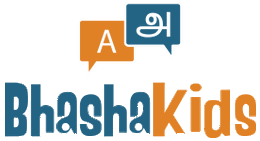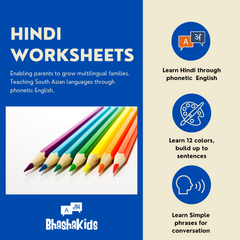“The young brain is inherently flexible, uniquely hard-wired to acquire language naturally.” (1)
Studies show that babies and kids have the ability to become bilingual at a young age. They can learn multiple languages at a time through age 7, where the languages live simultaneously in their brains, without having to be translated from and into English to be understood. This changes as kids get older, so the prime time to expose them consistently is while they are young.
"Young language learners can acquire native-like fluency as easily as they learned to walk, in contrast to an adult language learner. Where adult learners have to work through an established first-language system, studying explicit grammar rules and practicing rote drills, the young learner learns naturally, absorbing the sounds, structures, intonation patterns and rules of a second language intuitively, as they did their mother tongue.”(1)
“But wait, my kid is older than 7! Is it too late for them?”
Looking at the research, kids older than 7 are just outside the “sensitive period”. Although there is a start of a decline in language learning ability at the age of 8, that doesn’t mean they cannot learn and acquire new language skills. They are still at an advantage in terms of their ability to acquire new language compared to teens and adults. However the native pronunciation skills may not be as strong, meaning, they may have a slight accent.
Immersion is the best way to acquire language, but in this day and age, it is not enough. Parents can benefit from structure, study aids and proven learning techniques in helping their kids become multilingual as opposed to immersion in a disorganized and inconsistent way. We all know we should be doing it, but how?
Here are 5 steps to help kids learn another language:
-
Start early, start with the basics, use teaching aids.
Patricia Kuhl, a renowned speech researcher from the University of Washington, gave a TED Talk back in 2010 called “The Linguistic Genius of Babies”. The entire video is worth watching, however, if you fast forward to 1:08, a chart (linked above) shows the rate at which one can learn languages by age. Her research clearly shows that early life (ages 0-7) are the best time to acquire native fluency in multiple languages. Kids’ brains grow exponentially in this “sensitive period” and they genuinely love to learn.
With kids under 2, simply expose them to a native speaker, immersion, and use the study aids for reinforcement. They may not develop the ability to sound out or read the cards until later, but they will remember the words, the images and the sounds you associated with them.
-
Play games in another language
“All children love to learn. They can learn absolutely anything that can be taught in an honest and factual way when they are taught in a joyous manner. The younger a child is, the easier it is for the child to learn.” (4)
Kids learn best through play. Make learning fun for them. You can read kids’ picture or board books in another language. You can play games like Simon Says, I Spy, or even simply remember to reinforce foreign language in imaginative play games, such as playing zoo with their stuffed animals. When is it a short, positive and meaningful interaction which naturally aligns with kids playful nature (as opposed to rote memorization and drills), your kids will retain more and be excited to practice with you.
-
Listen to music or watch a kids show in that other language
There is a slew of kids media on YouTube in various Indian languages. You don't necessarily need to subscribe to Surya TV and watch soap operas with your grandparents, but hearing the language daily and in kid appropriate media will get you there.
I used to play a Malayalam nursery rhyme for my son when we were at the doctor's office to calm him down when he was about to get a shot. If your kids are readers, see if you have the option to turn on English subtitles. Kids can read along in English while hearing the show in another language. For example “Chhota Bheem” is India’s number one children’s cartoon, available on Amazon Prime Video and Netflix. My kids learned how to say “Bachao!” when they needed “Help!” just by paying attention to the subtitles.
There is a caveat - babies to toddlers need human interaction to learn. Their screen time should be limited, as it doesn’t add up to higher fluency and retention, per speech expert Patricia Kuhl (see her Ted Talk, from minute 5:33-7:45). Babies’ retain information based on how much attention they receive from adult companions. We cannot discount the value of the human being in teaching the baby, versus an app or screen.
-
Practice! Get them to answer questions, get them talking
Kids learn through repetition and fun engagement. Take opportunities at the dinner table to talk about food. Walk through the house and name objects, colors and count things. Practicing for 10 minutes a day makes it less intensive but the consistency is worth it. Do what you can to get them to answer the games and questions in the language itself. Soon you can get them to start asking questions too!
-
Have your child spend time with a native speaker.
The more they hear the language and see how it is pronounced, their young brains can pick up on the correct pronunciation. Ask Ammache and Appachen (Grandma and Grandpa in Malayalam) to speak with kids in their native language. Even grandparents can use our BhashaKids study aids to help reinforce vocabulary. Not only will you have exposed children to native language sounds, but you’ve got a quality, structured moment for the grandparents to spend time with their grandkids and share their culture.
On a personal note…
In our multilingual household where we don't speak each other's language - immersion was hard. We were both working full time and the kids were in daycare. At the end of the day we were too tired to consistently "immerse" our kids in another language. Our parents didn't live closeby and weren't too adept at Skype or Facetime. Classes were too far away, none of the existing language apps had the languages we wanted to learn (no Tamil or Malayalam!), or YouTube videos focused on learning the language script instead conversational skills. Frankly, there was nothing out there that could meet our needs. We knew we needed some kind of tool to help us to do it on our own. So, we decided to do it ourselves and BhashaKids was born.
BhashaKids aims to help you as a parent achieve the five steps outlined above. The flashcards are designed to be used by those already familiar with Tamil, Malayalam or Hindi, preferably used by a native speaker. All purchases will be accompanied by a simple audio file to hear the native pronunciation and practice along. Each deck has a game card that has fun activities to play with the kids. Try it out for 10 minutes a day and be consistent. You will start to see results. We hope to pique your child’s interest, to nurture their curiosity for your native language, and help grow multilingual families.
Resources:
- Interview with Language Stars, 2017
- Kuhl, Patricia. University of Washington, Institute for Learning & Brain Sciences, 2010.
- Kuhl, Patricia. "The Linguistic Genius of Babies", TED Talk, February 2010.
- Doman, Glenn. “Early Child Development”, Institute for the Achievement of Human Potential. https://www.iahp.org/early-development/
- Saiber, A.K., “Thappo Thappo Thappani”, https://youtu.be/LtAoT5_tqC8
- https://en.wikipedia.org/wiki/Chhota_Bheem
Looking to get started? Check out our Language collections: bilingual books, worksheets and vocabulary cards.




Leave a comment